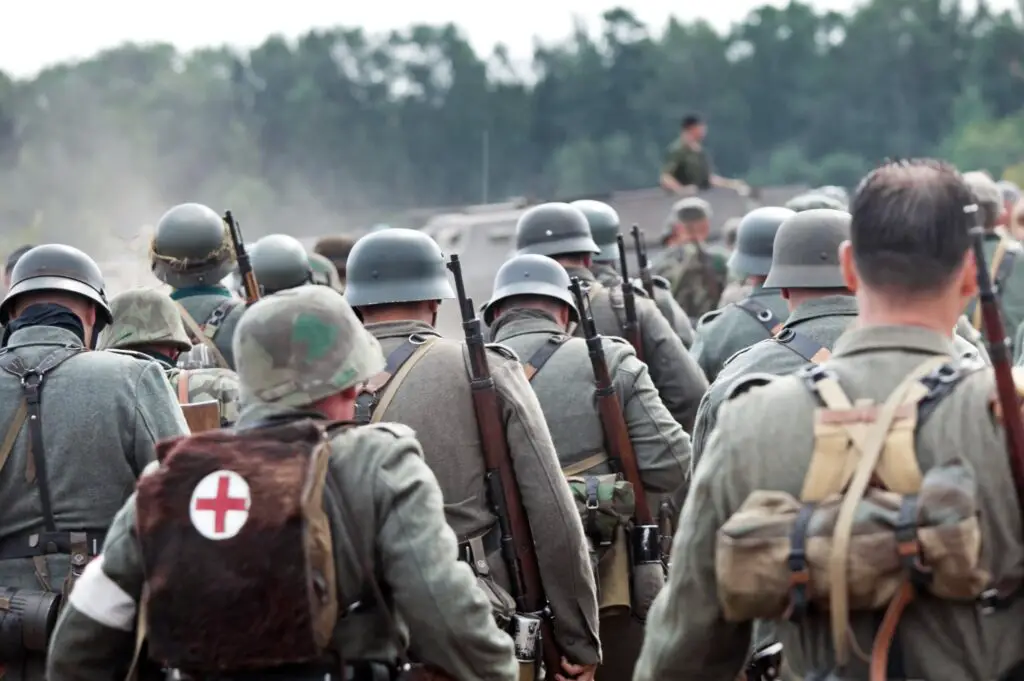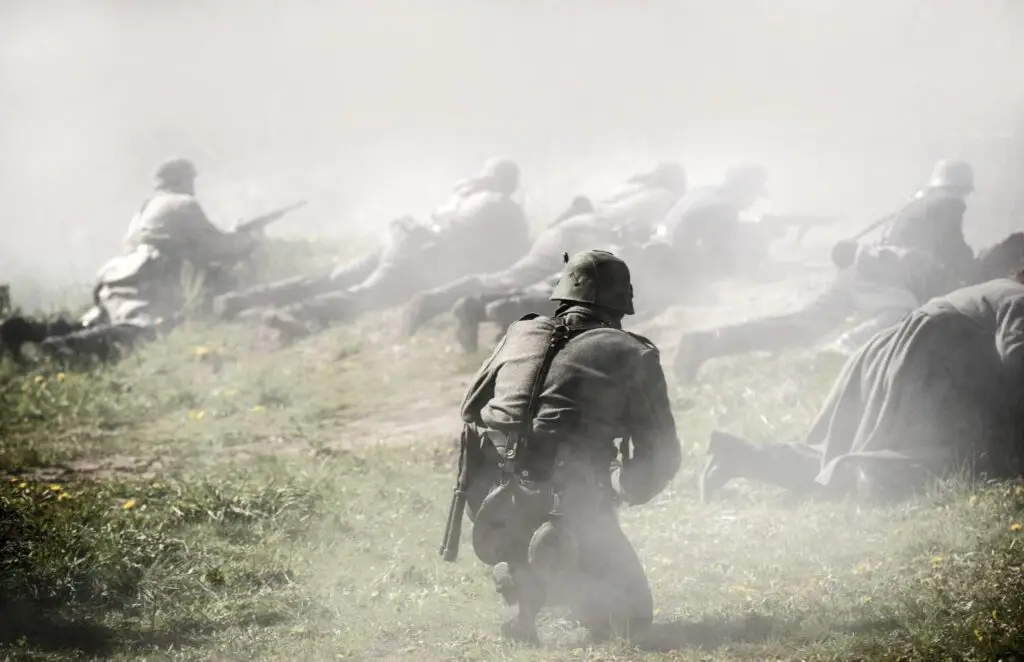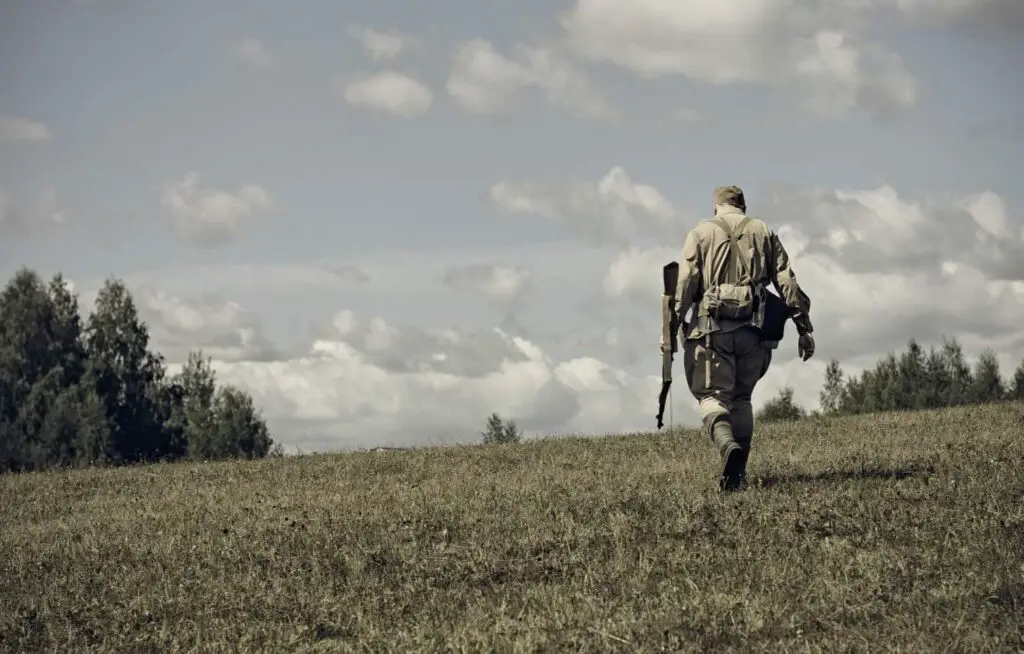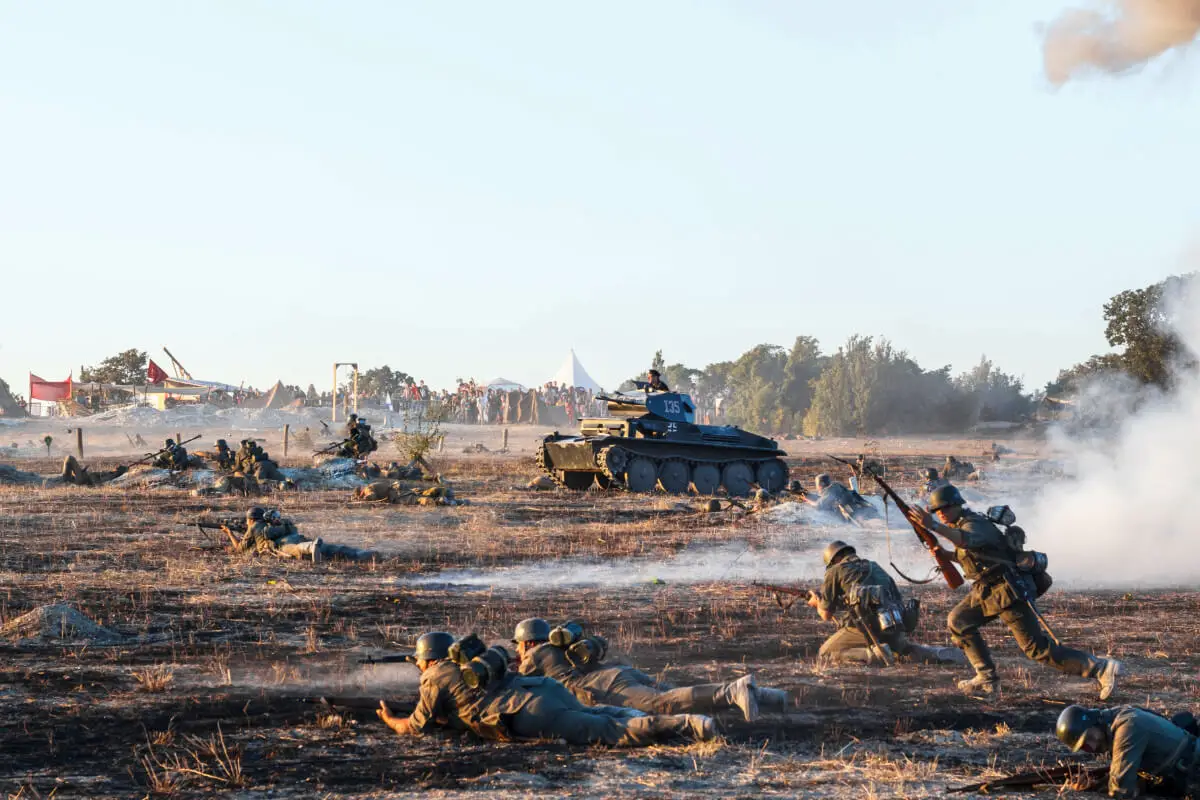At the outbreak of World War II, a vast mosaic of nations found themselves aligned against a common enemy, bound together not only by the necessity of combat but by a collective aspiration for victory and peace. The United States, the United Kingdom, the Soviet Union, and China emerged as the linchpins of this global coalition, wielding their industrial, military, and strategic might to turn the tide against the Axis powers.
Beyond these primary players, a cadre of secondary nations lent their valiant efforts to the cause, offering more than mere numbers to the fray — they provided the critical depth and breadth needed to sustain a protracted and arduous conflict across multiple theaters. As we delve deeply into these alliances’ rich tapestry, trials, and triumphs, we prepare to unearth the seminal factors that shaped the outcome of modern history’s most widespread and impactful war.
Table of Contents
Major Allied Powers

The Fortitude of Alliances: Dissecting the Allied Contributions in World War II
In an era of unprecedented geopolitical upheaval, the Allied powers emerged as a symbol of resilience and collective strength during the Second World War. This alliance of nations was not a monolith; instead, it represented a patchwork of disparate countries, each bringing unique contributions and perspectives to the arduous fight against the Axis powers.
Principal Nations of the Allied Powers
The core of the Allied powers comprised the United States, the Soviet Union, and the United Kingdom, each playing pivotal roles in strategic operations and providing material support to the war effort.
- The United States: Arsenal of Democracy
The United States’ entry into the war in 1941 marked a significant turning point. As an industrial powerhouse, it earned the moniker “The Arsenal of Democracy,” a term famously coined by President Franklin D. Roosevelt. The United States churned out vast quantities of arms, ammunition, aircraft, and warships, supplying its military and bolstering its allies’ efforts through programs like the Lend-Lease Act. American forces fought on numerous fronts, from the beaches of Normandy to the Pacific islands, galvanizing the war toward the ultimate defeat of the Axis powers.
- The Soviet Union: The Eastern Front Behemoth
The Soviet Union bore the brunt of the land war in Europe on the Eastern Front, engaging in some of the war’s most devastating and pivotal battles, such as Stalingrad and Kursk. The Red Army’s relentless push westward became a key factor in weakening Nazi Germany’s military might. Moreover, the Soviet Union’s staggering sacrifices, with casualties numbering in the tens of millions, exemplify the harrowing human cost of war and the resilience of its people in the face of oppression.
- The United Kingdom: Defiance and Expertise
Stiff-upper-lipped defiance and unyielding endurance characterized the United Kingdom’s war effort. Britain’s strategic geographical position and distinguished intelligence operations, exemplified by the codebreakers at Bletchley Park, were instrumental in undermining Axis communications and strategies. The Royal Air Force’s victory in the Battle of Britain was a critical psychological triumph, reaffirming the Allied capability to stand against daunting odds.
Contributions of Other Nations
Although not always deemed principal contributors, other nations played crucial roles in shaping the war’s outcome. Notably, China’s protracted resistance against Japan led to a sustained drain on Japanese resources. The dominions of the British Empire, such as Canada, Australia, and New Zealand, provided significant forces and material support while serving on numerous fronts. Following its initial capitulation, France made meaningful contributions through the Free French Forces under the leadership of Charles de Gaulle.
Minor nations’ resistance movements and contributions, often overshadowed, were nonetheless vital to the Allied strategy. They functioned as a thorn in the side of the Axis and sometimes provided critical intelligence.
An Interplay of Strategies and Heroism
The array of national contributions to the Allied efforts in World War II extended beyond the battlefield. Economic support, resistance movements, and labor forces played seminal roles in establishing the infrastructure necessary for victory. The Lend-Lease Act, extended by the United States, provided indispensable aid to allies, reinforcing their economic and military resilience.
Indeed, the war effort was a mosaic of courage, scientific innovation, and strategic foresight. From the development of radar technology to the execution of complex military operations, each action underscored the collective commitment to prevail against forces that sought to dismantle the fabric of free societies.
To overlook the multiplicity of nations comprising the Allied powers would neglect the richness and complexity of this historical chapter. Each member nation, through a fusion of might, intellect, and sheer endurance, contributed indispensably to the overarching success of the Allied mission. Their intertwined narratives testify to the potency of unity in confronting tyranny and shaping the contours of our modern world order.

Secondary Allied Nations
The Auxiliary Allies: Unsung Backbones of the War Effort
In scrutinizing the panorama of the Second World War, attention often gravitates towards the principal nations, their pivotal battles, and strategic decisions that shaped the outcome. Nevertheless, a comprehensive understanding mandates the acknowledgment of secondary Allied nations whose contributions, albeit less spotlighted, proved indispensable to the tapestry of victory. These nations provided crucial support structures, resources, and resistance efforts that undergirded the principal nations’ more visible actions on the world stage.
Diverse Roles and Strategic Contributions
The multifaceted engagement of secondary Allied nations manifested through various critical roles. These included the provision of manpower, essential resources, and strategic military bases that facilitated broader Allied operations.
- Manpower Augmentation
Many of these nations furnished valuable troops to combat regions across various theaters of war. For example, Australians and New Zealanders played essential roles in the North Africa and Pacific campaigns. Their bravery in crucial battles like El Alamein and Tobruk, or in the arduous Kokoda Track campaign, reinforced the strengths of principal Allies and ensured that the Axis powers were engaged on multiple fronts.
- Resource Allocation
The secondary Allies also contributed by channeling resources towards the war effort. Canada’s industrial capability ramped significantly during the war, earning it the moniker “the arsenal of the Allied Powers.” It provided not only military equipment but also raw materials and foodstuffs essential to sustain the war effort, particularly for Britain during its intense duress.
- Bases for operations
Combat strategies often hinged on the availability of strategic bases. Smaller nations frequently offered their territories as launch pads for operations. For instance, countries in the Caribbean served as crucial bases for anti-submarine operations in the Atlantic, contributing to the safety of supply convoys traversing these perilous waters.
Resistance and Intelligence
Secondary nations’ roles were not confined to material or logistical support; they were profoundly active in espionage and resistance.
- Espionage and codebreaking
Many secondary Allied countries contributed to the intelligence war, which was crucial in decrypting the communications of Axis powers. For instance, Poland’s initial work on cracking the Enigma code was a keystone that would lead to the Allies’ breakthroughs in signals intelligence, significantly aiding decision-makers in the conduct of the war.
- Domestic resistance
Occupied nations such as Greece, Yugoslavia, and Norway undertook significant resistance efforts that diverted Axis attention and resources. These various movements harassed occupying forces, engaged in sabotage, and dangerous liaisons with Allied intelligence to supplement military campaigns, shaping an environment where Axis powers could never truly consolidate control over occupied territories.
Global Impact of Contribution
While the individual contributions of these nations may appear as mere footnotes against the broader strokes of history, their cumulative impact had global reverberations.
- Sustained pressure
The contributions of secondary nations, especially in secondary theaters of the war, prevented Axis forces from redeploying their strength to primary fronts. This persistent, widespread pressure diluted the Axis’s military response capacity.
- Innovation and adaptation
The challenges faced by these nations, often under-equipped and under-resourced, drove innovation and adaptation to circumstances. Whether developing unconventional warfare tactics or adapting older equipment to new purposes, these practices infused the Allied side dynamically and flexibly.
- Diplomatic leverage
On the diplomatic front, countries’ inclusive and multifarious alignment under the Allied banner bolstered the cause’s moral legitimacy and political solidarity. This collective representation strengthened the Allies’ hand in negotiations and post-war reconstruction efforts.
This carefully woven fabric of contributions from secondary Allied nations proffers an intricate backdrop behind the panoramic war theater dominated by the primary powers. Their roles, too often assigned to the periphery of mainstream narratives, served as structural pillars of the war effort.
The war, undoubtedly a conflagration that drew upon every fabric of global societies, is a testament to the interconnected nature of international strife and the indispensable nature of collective, multilateral cooperation. The secondary Allied nations offered a spectrum of support that, when juxtaposed with the primary nations’ capacities, fortified a resolute coalition determined to restore balance to a world besieged by conflict.
In this canvas of global collaboration, it is imperative to recognize the marquee players and honor the ensemble of diverse, steadfast contributors. Collectively, they fashioned a robust alliance predicated on shared values and mutual interests, which surged beyond the epoch of conflict to shape an emergent world order premised on united cooperation and peace.

Allied Strategies and Coordination
Coordinated Offensives: Allied Strategies Against the Axis Powers
In the matrix of World War II’s intricate battle plans and maneuvers, the coordination between Allied forces was a catalyst for the eventual defeat of the Axis powers. Their collaboration was not a product of serendipity but a testament to meticulous planning, shared intelligence, and robust communication channels that transcended geographical boundaries and military doctrines. As we delve into the mechanisms of this grand alliance, it’s imperative to acknowledge the sheer complexity and foresight underpinning their joint military operations.
Military Tactics and Operations
Central to the Allied success were the combined arms operations, where the synergistic employment of infantry, artillery, armor, and air support optimized the strengths of each military branch. This approach, championed particularly by the United States and Britain, proved crucial in orchestrating the large-scale landings and subsequent operations, like those witnessed during D-Day and in the thrust across Europe. The integration of services allowed for a fluidic, albeit grueling, push against formidable Axis defense lines.
The Allies’ strategic bombing campaigns were another pivotal element. These bombings aimed to cripple Axis industrial capabilities, thus undermining their capacity to wage sustained warfare. The United States Army Air Forces and the British Royal Air Force leveraged their extensive resources to perform round-the-clock bombing raids—by day and night, respectively. This non-stop barrage was a grim herald for Axis forces, foreshadowing their decline.
Naval Superiority and Blockades
The war at sea also held sway in the strategic landscape. Allied naval dominance, particularly in the Atlantic, ensured the safe passage of troops and supplies, which was a linchpin in upholding the war efforts. Naval blockades imposed by the Allies disrupted Axis supply chains, slowly draining their resources. This attrition, though less immediate than the destruction wrought on battlefields, was insidious and inexorable—strangleholding Axis powers into submission.
Scientific and Technological Progress
Advances in technology and scientific innovation bolstered Allied strategies. From radar technology’s pivotal role in the Battle of Britain to penicillin’s contribution to saving countless lives, these breakthroughs often gave the Allies a competitive advantage. The Manhattan Project, veiled in secrecy, eventually led to the development of nuclear weapons, a decisive factor that brought the Pacific conflict to a swift end.
Intelligence Coordination and Deception
Intelligence operations played a critical role in the planning and executing Allied strategies. Codebreakers, such as those stationed at Bletchley Park, unraveled Axis communication codes, notably the Enigma, granting the Allies access to sensitive information exploited to anticipate and thwart enemy plans.
In addition, the Allies utilized deception on a strategic scale. Operations like Bodyguard and Fortitude sowed confusion among Axis command, misdirecting their forces and securing the success of key initiatives such as the Normandy invasion. The strategic dissemination of false information was as crucial a weapon as the artillery used on the front lines.
Military Doctrine and Command Structure
The effectiveness of Allied coordination also hinged on flexible military doctrines that allowed for adaptive leadership. The unification of command emerged as a necessity, and it was epitomized by the Supreme Headquarters Allied Expeditionary Force (SHAEF) under General Dwight D. Eisenhower. This consolidated command structure was instrumental in ensuring the multinational forces could operate under a shared strategic vision, with clear communication channels and decision-making processes.
The remarkable convergence of wills under the SHAEF banner represented far more than mere military compliance; it embodied the existential commitment of diverse nations to a common goal—a world free from the specter of totalitarian domination.
The synchrony of strategies across continents, the cumulative resolve of the Allied nations, and the assiduous exploitation of every available advantage were instrumental in orchestrating the downfall of the Axis colossus. Each strategic decision, from the careful rationing of resources to the diplomatic finesse in rallying support, was a thread in the larger tapestry of wartime collaboration—a testament to the indomitable human spirit when united against tyranny.

World War II’s legacy is written in the annals of history as a testament to collective resolve in the face of tyranny and aggression. The concerted efforts of the primary and secondary Allied powers showcase a narrative of perseverance, ingenuity, and unity that not only determined the outcome of the war but also remolded international relations in its aftermath.
Through strategic alliances, technological innovation, and shared sacrifice, the tapestry of nations stood unwavering against the Axis threat, forging a new world order from the crucible of war. As we reflect on these past endeavors, we carry forward the lessons learned and the stories of valor, lest we forget the cost of freedom and the power of allied forces standing shoulder to shoulder in pursuing a just and peaceful world.
At A Bus On A Dusty Road, we discuss travel, life, and ex-pat living. We are all about “Living Life As A Global Citizen.” We explore social, cultural, and economic issues and travel.
We would love to have you be part of our community. Sign up for our newsletter to keep up-to-date by clicking here. If you have any questions, please contact me, Anita, by clicking here.
Listen to our Podcast called Dusty Roads. You can find it on all major podcast platforms. Try out listening to one of our podcasts by clicking here.
Subscribe to our A Bus On A Dusty Road YouTube Channel filled with great videos and information by clicking here.
Related Questions
Living Through The COVID Lockdown in Hanoi, Vietnam
The day Hanoi started its COVID lockdown, I exited the Vietnam French Hospital. I was in the hospital for a week due to a cycling accident on the Long Bien Bridge; I needed an operation on my hip area.
By clicking here, you can discover Living Through The COVID Lockdown in Hanoi, Vietnam.
What Are Some Differences Between Hanoi And Saigon? 9 Differences
Norway, Denmark, and Sweden celebrate Christmas on December 24th because Christmas Day was permanently reserved as a holy day. The Scandinavians also celebrate on the eve of a sacred day, not the holy day itself. Many Scandinavians would attend a church service mass on Christmas morning.
By clicking here, you can discover more by reading our blog What Are Some Differences Between Hanoi And Saigon? 9 Differences.

